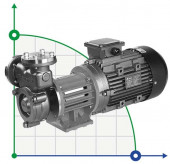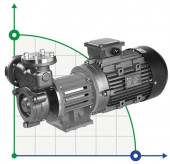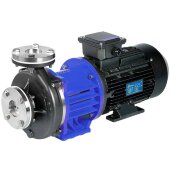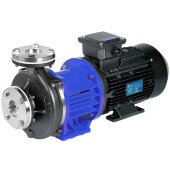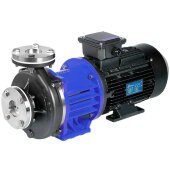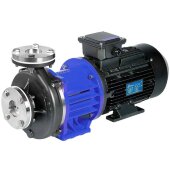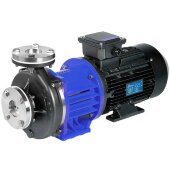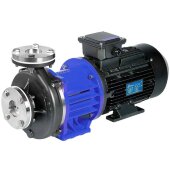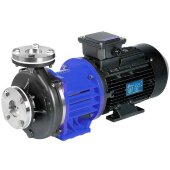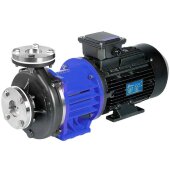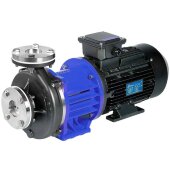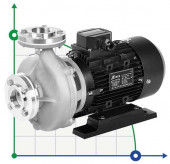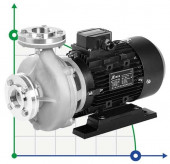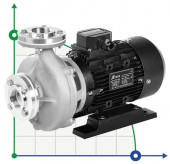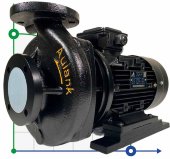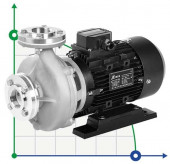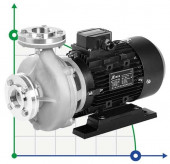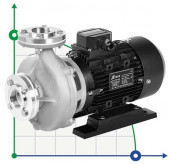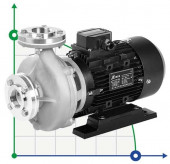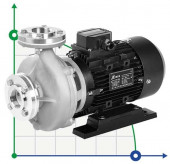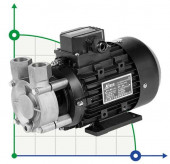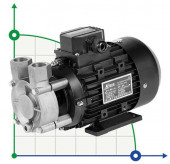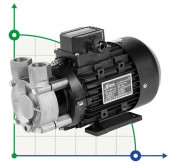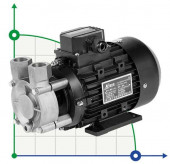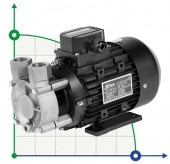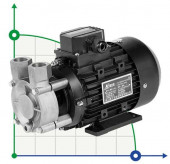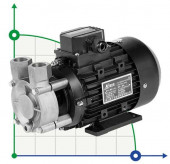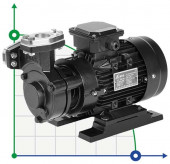- Home
- Industrial pumps
- Pumps by liquidsBitumen pumpsEx pump for draining bilge liquidsNitric acid pumpPump for dosing hypochlorite, chlorinePump for liquid glassPump for fatPump for potassium bichromate, caustic sodaPump for cream and pastePump for fish and seafoodPump for syrupSour cream pumpPump for hydrocarbonsPump for minced meatPump for chocolate and massPump for emulsions and suspensionsPump for spice and saltPump for cheese grainPump for the extractPumps for ammonia water, ammonium hydroxide NH4OHPumps for stillage, mashWine pumpsWater pumpsPumps for viscous liquidsPumps for hexaneGlycerin pumpsLiquid feed pumpsPumps for UANPumps for ceramic slipAcid pumpsGlue pumpsPumps for paints and varnishesFuel oil pumpsMilk pumpsPumps for an ice creamPumps for urea, liquid fertilizers, ammoniaPumps for petroleum products, gasoline, diesel fuelMolasses pumpsSuperheated water pumpsPermeate PumpBeer pumpsChemical dosing pumpsPumps for giblets and slaughter wasteVegetable oil pumpsResin pumpsPumps for pumping alcohol ЕХSewage and sewage pumpsFertilizer pumpsPumps for freonSlurry pumpsLye pumpsEthylene glycol pumpsAcid-resistant pumps for aggressive liquidsThermal oil pumps +350Food pumps for juice, concentrate
- Ethylene glycol pumps | page: 2
Ethylene glycol pumps | page: 2
Ethylene glycol pumps are a special type of pump that is designed for pumping special liquid through pipes. It can also be used for pumping ethylene glycol. A solution of these chemicals with water has excellent temperature properties: the freezing point of the liquid decreases, and the boiling point increases. Therefore, for proper interaction with such a substance, it is necessary to use pumps that contain engines with additional protection against explosions. Less often in such situations, you can buy a pneumatic diaphragm pump.
The liquid pumped by the ethylene glycol pump does not cause corrosion and does not catch fire, but it is quite toxic to humans. It should not be inhaled or swallowed. When pumping the solution, it is important to maintain the desired temperature, flow rate of the liquid and its pressure.
Types of ethylene glycol pumps
There are many pumps that are suitable for pumping ethylene glycol. All of them differ according to the structure, construction and parts used in the base. Therefore, there are pumps with dry and wet rotors. They differ in that in the dry version with glycol liquid is only in contact with the wheel that drives it. The second option considers a design in which only the pump engine itself remains dry.

In general, the most common classification of ethylene glycol pumps is as follows:
- Air pumps for ethylene glycol.
- Pneumatic diaphragm pumps for ethylene glycol.
- Centrifugal pumps for ethylene glycol.
- Magnetic coupling pumps for ethylene glycol.
- Magnetic driven centrifugal pumps for ethylene glycol.
Since the liquid does not cause corrosion, almost all materials can be used to make such pumps. However, the limiting factor for devices is precisely the temperature. Based on it, the right models are selected. For example, centrifugal pumps with a mechanical shaft are used for situations where temperature does not play a big role, and the system pressure is small. The magnetically driven pump is used for high-pressure and temperature applications, as mechanical seals are not reliable when interacting with excessively hot solutions.
How to choose a glycol pump?
As already mentioned, before choosing a pump, you need to clearly analyze the temperature conditions in which the pump will operate. Manufacturers always indicate the maximum temperature for the device in the technical specifications.
In addition, the overall environment of the ethylene glycol pump must be taken into account. For heating, a solution of water and ethylene glycol is mainly used, however, not all pumps are suitable for operation with such liquids. It is also important to pay attention to the size of the device. Most models have relatively identical dimensions, so be sure to calculate the space where the pump will be placed.
Be sure to analyze the required power, operating pressure, pipe diameter, and design features. All these characteristics are provided by manufacturers and are described under each device model. In cases where you have any questions, you can always check the necessary information with the specialists of our online store.
| Temperature (min), °C | -196 |
| Producer | ALUNAK |
| Pump capacity, m3/h | 19.8 |
| Feed height, m | 70 |
| Power capacity, kW | 7,5 |
| Temperature (min), °C | -196 |
| Producer | ALUNAK |
| Pump capacity, m3/h | 24 |
| Feed height, m | 80 |
| Power capacity, kW | 11 |
| Temperature (min), °C | -50 |
| Producer | ALUNAK |
| Pump capacity, m3/h | 4 |
| Feed height, m | 15 |
| Power capacity, kW | 0,75 |
| Temperature (min), °C | -50 |
| Producer | ALUNAK |
| Pump capacity, m3/h | 6 |
| Feed height, m | 18 |
| Power capacity, kW | 1,5 |
| Temperature (min), °C | -50 |
| Producer | ALUNAK |
| Pump capacity, m3/h | 6.3 |
| Feed height, m | 30 |
| Power capacity, kW | 2,2 |
| Temperature (min), °C | -50 |
| Producer | ALUNAK |
| Pump capacity, m3/h | 9 |
| Feed height, m | 35 |
| Power capacity, kW | 3 |
| Temperature (min), °C | -50 |
| Producer | ALUNAK |
| Pump capacity, m3/h | 25 |
| Feed height, m | 25 |
| Power capacity, kW | 4 |
| Temperature (min), °C | -50 |
| Producer | ALUNAK |
| Pump capacity, m3/h | 25 |
| Feed height, m | 30 |
| Power capacity, kW | 4,5 |
| Temperature (min), °C | -50 |
| Producer | ALUNAK |
| Pump capacity, m3/h | 25 |
| Feed height, m | 35 |
| Power capacity, kW | 5,5 |
| Temperature (min), °C | -50 |
| Producer | ALUNAK |
| Pump capacity, m3/h | 32 |
| Feed height, m | 35 |
| Power capacity, kW | 7,5 |
| Temperature (min), °C | -50 |
| Producer | ALUNAK |
| Pump capacity, m3/h | 35 |
| Feed height, m | 40 |
| Power capacity, kW | 11 |
| Temperature (min), °C | -30 |
| Producer | ALUNAK |
| Pump capacity, m3/h | 9 |
| Feed height, m | 22 |
| Power capacity, kW | 0,5 |
| Temperature (min), °C | -30 |
| Producer | ALUNAK |
| Pump capacity, m3/h | 9.6 |
| Feed height, m | 25 |
| Power capacity, kW | 0,75 |
| Temperature (min), °C | -30 |
| Producer | ALUNAK |
| Pump capacity, m3/h | 12 |
| Feed height, m | 30 |
| Power capacity, kW | 1,5 |
| Temperature (min), °C | -30 |
| Producer | ALUNAK |
| Pump capacity, m3/h | 14.4 |
| Feed height, m | 36 |
| Power capacity, kW | 2,2 |
| Temperature (min), °C | -30 |
| Producer | ALUNAK |
| Pump capacity, m3/h | 18 |
| Feed height, m | 40 |
| Power capacity, kW | 3 |
| Temperature (min), °C | -30 |
| Producer | ALUNAK |
| Pump capacity, m3/h | 22 |
| Feed height, m | 45 |
| Power capacity, kW | 4 |
| Temperature (min), °C | -30 |
| Producer | ALUNAK |
| Pump capacity, m3/h | 24 |
| Feed height, m | 52 |
| Power capacity, kW | 4,5 |
| Temperature (min), °C | -30 |
| Producer | ALUNAK |
| Pump capacity, m3/h | 45 |
| Feed height, m | 45 |
| Power capacity, kW | 5,5 |
| Temperature (min), °C | -30 |
| Producer | ALUNAK |
| Pump capacity, m3/h | 60 |
| Feed height, m | 52 |
| Power capacity, kW | 7,5 |
| Temperature (min), °C | -30 |
| Producer | ALUNAK |
| Pump capacity, m3/h | 1.5 |
| Feed height, m | 40 |
| Power capacity, kW | 0,55 |
| Temperature (min), °C | -30 |
| Producer | ALUNAK |
| Pump capacity, m3/h | 1.8 |
| Feed height, m | 45 |
| Power capacity, kW | 0,55 |
| Temperature (min), °C | -30 |
| Producer | ALUNAK |
| Pump capacity, m3/h | 3.6 |
| Feed height, m | 60 |
| Power capacity, kW | 0,75 |
| Temperature (min), °C | -30 |
| Producer | ALUNAK |
| Pump capacity, m3/h | 3.6 |
| Feed height, m | 60 |
| Power capacity, kW | 0,75 |
| Temperature (min), °C | -30 |
| Producer | ALUNAK |
| Pump capacity, m3/h | 5.4 |
| Feed height, m | 60 |
| Power capacity, kW | 1,5 |
| Temperature (min), °C | -30 |
| Producer | ALUNAK |
| Pump capacity, m3/h | 5.4 |
| Feed height, m | 60 |
| Power capacity, kW | 1,5 |
| Temperature (min), °C | -30 |
| Producer | ALUNAK |
| Pump capacity, m3/h | 6.48 |
| Feed height, m | 85 |
| Power capacity, kW | 2,5 |
| Temperature (min), °C | -30 |
| Producer | ALUNAK |
| Pump capacity, m3/h | 8.4 |
| Feed height, m | 85 |
| Power capacity, kW | 2,2 |

